Featured image credit: Pixabay
There has been a lot of discussion and speculation about the proposed data center project in Minooka. Some of what is being shared online is incomplete or simply not accurate. My goal with this article is to provide an honest and factual look at what has been discussed, what the project could mean for our community, and to clear up some common misunderstandings.
Project Overview
Here is what is publicly known about the proposal.
- The data center would total roughly 1,099,000 square feet of industrial space across seven buildings.
- The developer estimates 20 full-time employees per building, or about 140 total, with an average salary of $135,000 per year.
- Property tax revenue is projected to be between $6 million and $7.5 million annually, with several million more generated in yearly utility taxes.
- Equinix, the developer, has committed to about $25 million in community investments. This includes upgrades to roads, water, sewer, and other local infrastructure, along with various community and impact fees.
- When Equinix first approached the village, they requested permission to use 7 million gallons of water per day for cooling. The village board immediately said this was not feasible. We made it clear that their cooling would need to come from another method that does not rely on such a large amount of water.
- The Minooka data center will not consume water in the way some other data centers do.
- Equinix paid for ComEd grid studies that showed the existing electrical grid can handle the additional power demand without any risk of residents losing power.
These points are drawn directly from public presentations and committee meetings. Anyone can view these meetings dates and agendas at events.minooka.com
What the Project Offers the Community
- Substantial and stable tax revenue
The property and utility taxes could bring in over $6 million each year, which would help fund essential village services such as police, road maintenance, and infrastructure improvements without raising taxes on residents. - Major infrastructure investment
The $25 million in improvements will directly benefit Minooka. These funds go toward road expansion, water and sewer improvements, and other public works that residents would otherwise pay for through local taxes or borrowing. - High-paying local jobs
Although data centers do not employ thousands of people, the jobs they do create are well-paid and skilled. The estimated 140 permanent positions would contribute significant income to the local economy. - Economic ripple effects
Projects of this size often attract other businesses, including suppliers, contractors, and technology firms. A major company like Equinix choosing Minooka signals that our community is capable of supporting advanced, future-focused industries.
Addressing Common Concerns
Concern: “This will cause my electricity bill to go up.”
Electricity prices are determined by a regional grid, not just local use. Minooka is part of the PJM Interconnection, which operates from the East Coast through the Midwest. If Equinix were to build the same data center elsewhere within the PJM grid, the increased demand would still affect electricity costs in our region, and Minooka would receive none of the tax or infrastructure benefits.
A recent report noted that transmission upgrades tied to new data center growth in the PJM region cost $4.4 billion in 2024, spread across all customers in that grid (Utility Dive, 2024). However, those costs are shared regionally, whether or not the data center is located here. I share all our residents concerns that data center upgrade costs to our transmission systems should be bore by the data centers, and not the average people. This is something that needs regulation at the federal level, and there isn’t anything we at the village-level can do to affect this.
Concern: “The grid can’t handle this.”
Equinix commissioned ComEd to conduct engineering studies. Those studies found that the local system can support the data center’s needs without causing blackouts or power shortages for residents. This is part of the reason the village required these studies before continuing any discussion.
Concern: “It will use millions of gallons of water daily.”
That is false. The initial request from Equinix did include a water-based cooling system that would have required 7 million gallons per day. The village board rejected that outright. The developer has since been required to pursue alternative, lower-impact cooling methods. The Minooka data center will not use local water for cooling in this way. Edited for clarity: They will use HVAC cooling, not evaporative water cooling.
Concern: “It will harm the environment.”
All large industrial projects have environmental impacts, but Equinix has pledged to use native Illinois landscaping and prairie-style buffers to help the site fit naturally into its surroundings. Environmental and stormwater controls are also required as part of site approval.
Concern: “We get nothing out of it.”
The project provides more than $25 million in direct community investments and millions in annual tax revenue. This is money that goes into village improvements and services for residents, without raising local taxes.
Concern: “It’s going to be loud”
I personally visited one of this developer’s current data centers, and while standing at the front door, I could only hear the cars and trucks on the road next to me. I could not hear the building, or any machines running from the building at that time. Granted – they were not testing their emergency generators when I was present. We have reviewed a sound study that shows that their sound should not be harmful to the residents of nearby neighborhoods, and that the sound of vehicles from Ridge Rd would actually be louder than noises coming from the data center.
Why “If It Goes Somewhere Else” Is Not the Simple Answer
It is easy to assume that rejecting a project like this means avoiding higher electric costs. Unfortunately, it does not work that way. Because of how the PJM grid operates, power demand in any connected state can influence the price for everyone on the grid.
If this facility were built in another part of the PJM network, our region could still experience small increases in cost due to the overall demand. The difference would be that Minooka would receive none of the tax revenue, jobs, or infrastructure improvements. In other words, we would carry part of the burden but get no benefit.
A recent Reuters report found that PJM capacity auction prices rose 22 percent in 2025, driven in part by growing data center demand. The takeaway is that these costs are shared regionally, not locally.
Oversight and Accountability
The village board has required strict oversight on this project, including:
- Transparency on infrastructure improvements and timelines
- Ongoing monitoring of utility consumption and environmental compliance
- Public access to records and meeting minutes
These are enforceable conditions, and the goal is to ensure that Minooka residents are protected and informed every step of the way.
How to Stay Informed
- Attend Village Meetings
All meetings are open to the public. Agendas and minutes are posted at events.minooka.com - Ask Questions and Verify Sources
Always check official village communications for updates before assuming information online is correct. - Review the Official FAQ and Fact Sheet
The sheet can be viewed here: https://www.minooka.com/news/posts/minooka-data-center-faq-and-fact-sheet/ - Watch for Ongoing Studies
The village will continue reviewing studies on power, traffic, noise, and environmental impact as plans evolve. - Engage Respectfully
Productive discussions come from facts, not fear. Our residents deserve transparency, and our board is committed to that.
Final Thoughts
The Minooka data center proposal is one of the largest potential developments our community has ever considered. It is right to ask hard questions, and it is equally important to base those questions on facts.
From the beginning, my goal has been to represent Minooka with integrity and honesty. We will continue to review every detail, to require transparency from the developer, and to make decisions that benefit our residents first.
All of this information has been and will continue to be available through public village meetings and the official website. I encourage everyone to stay involved, ask questions, and help keep our conversations rooted in facts rather than speculation.
One Last Thing –
I own an IT business. I support the technology needs of other small businesses in the area. Having said that, I do not have any clients who are large enough to store data in data centers, For the purpose of my business I do not use or have contracts with any data center, let alone this one. I have not received anything from the data center in regards to considering their development in Minooka. That would be illegal bribery, and I am never going to participate in things that sell our community short for personal gain.


